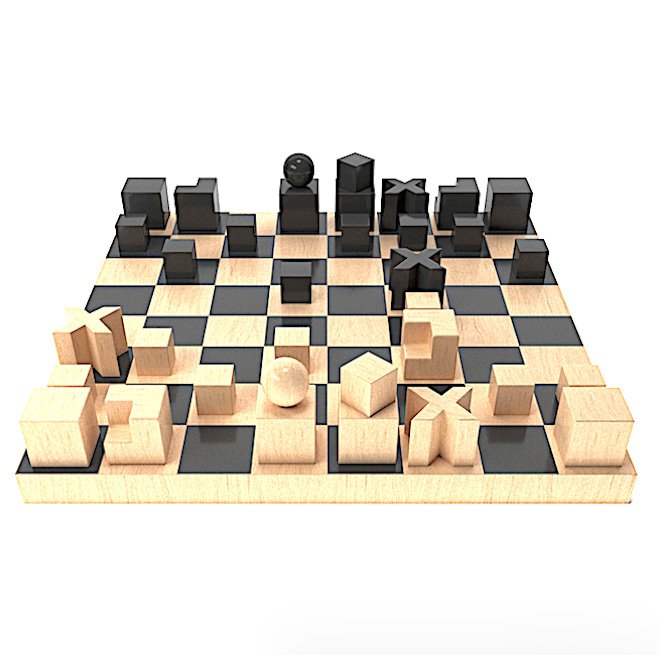Bauhaus furniture reproductions continue to be manufactured in many parts of the world.
Their style, functional and funky, is reinvented everywhere in modern design.
Bauhaus is to design what the wheel is to technology.
Mention Bauhaus to a contemporary designer and chances are a devotional glow will sweep gently across their expression.
Maybe an exageration but not too much. As an example, it’s hard to look at a piece of Ikea furniture, without noting how much the clean, simple lines are reminiscent of the German style.
Indeed, Ikea design strategist Mats Nilson, recognizes that his company’s ideology is inspired by the Bauhaus School.
Design-wise, the artists turned away from anything overly fussy and pretentious.
They wanted clean, modern lines uncluttered by stylistic affectations.
The school was greatly influenced by Modernism, rejecting tradition.
They virtually reinvented furniture design.
Top Bauhaus designs.

Wassily Chair by Marcel Breuer
Also known as Model B3 (Knoll), it’s designed by Hungarian modernist architect-designer in 1925.
He was inspired to create the chair while riding his bicycle.
He envisioned taking the tubular steel used for the handlebars and bending it into pieces of furniture.
Breuer took the traditional form of an overstuffed club chair and simplified it down until it was just an outline, with a canvas seat, back and arms.
It became known as Wassily Chair, after the Russian painter who praised the design.
Wassily Kandinsky, was Breuer’s friend and fellow Bauhaus instructor.
“Eventually chairs will become obsolete, replaced by supportive columns or air.”
Baby Cradle by Peter Keler
Ultra modern, colourful cradle designed by the German architect in 1922.
Kandinsky’s work was his inspiration. His book on colour theory outlined his feelings about chromatism and its psychological effects on humans.
Composed of simple shapes, triangle and rectangle, with primary colours: block body in red and yellow, with blue circular rocker, a trademark palette of Bauhaus.
Modern reproductions are available at Tecta.
It’s hard to believe it was designed a century ago, as it seems as fresh and modern as anything that could come out of a contemporary design studio.

Bauhaus Chess Set by Josef Hartwig
This Munich-born artist designed a futuristic chess set in 1923 using minimal lines, circles and squares, reducing the pieces to their basic function.
The X-shaped bishop represents its diagonal movements, while the near-limitless movements of the queen are represented with a sphere on top of a cube.
By eliminating monarchical symbols, typical of chess, he aimed to redesign the game for modern ages. Exhibited at Cooper Hewitt Museum de Nueva York.
Brno Chair by Mies van der Rohe
Designed by this modernist architect in 1929, it exemplifies the Bauhaus principle of reducing objects to their basic elements.
Its design is based on the idea that it is not necessary for a chair to have four legs when it can be built in a cantilever-style, using a single C-shaped bar to support the entire seat.

Tea pot by Marianne Brandt
In 1924, this German artist took the design of a conventional teapot and stripped it of any ornament to create her geometric metal tea infuser and strainer.
Seven centimetres high, the tea infuser is petite as a result of its function.
Simple in form and colour, the silver hemisphere body is supported by a crossbar structure.
A D-shaped ebony handle is high up on the body for easy pouring. One was recently auctioned at Sotheby’s.

Bachelor’s Wardrobe by Josef Pohl
This simple plywood wardrobe created by the Czech designer in 1929 became known as the “Wardrobe on wheels” due to its mobile and space-saving qualities.
Designed to be versatile and convenient, the rectangular wardrobe is mounted on castors wheels, making it easy to move to different locations.
Designed to enable people to furnish their apartments at an affordable price.
The wardrobe is compact and efficient, set in a minimal frame without any complex gadgets.

Barcelona Chair by Mies van der Rohe and Lilly Reich
Created in 1929 for the Barcelona International Exhibition, the Barcelona Chair (Knoll) was designed by Bauhaus director and architect Van der Rohe in collaboration with architect Lilly Reich.
It features two slim rectangular cushions over a light, stainless-steel frame.
The chair frame was designed to be bolted together, but it was redesigned in 1950 using stainless steel. Bovine leather was also used in place of the original ivory-coloured pigskin.

MT8 Lamp by William Wagenfeld and Carl Jakob Jucker
This table lamp created by these German and Swiss designers, became known as the Bauhaus Lamp, embodying a key school principle:
“Form follows function”
Comprising a circular base, a cylindrical shaft and a spherical shade, the light boasts a simple, geometric shape that is as economical as possible in terms of time and materials.
The lamp is made from precisely cut glass and metal with an opaque lamp shade, a type formerly used only for industrial lighting.
Available at Tecnolumen.

Door Knob by Walter Gropius
This modernist door handle by Bauhaus founder and German architect, Gropius, was first put into mass production in 1923, after being originally designed for the Fagus Factory in Alfeld.
Made from nickel- plated brass and produced by ironmongery manufacturer Izé, the industrial-style door handle comprises a cylindrical grip and a cranked, squared stem.
Available at Tecnoline.

Nesting Tables by Josef Albers
German-born American painter, Albers, designed this set of modern accent tables while serving as the artistic director of the furniture workshop at Bauhaus in 1926.
Each table was made from solid oak and lacquered acrylic glass.
Known for his colourful, geometric artworks, Albers applied the same style to the tables, giving each a distinctive colour of blue, red, yellow and white.
Still produced by Daimler.
Bauhaus series for NEOMANIA explores the enduring influence of this movement. Bauhaus is the most influential art and design school in history. To celebrate their centenary, we publish a series of articles rediscovering the school’s key artists.


